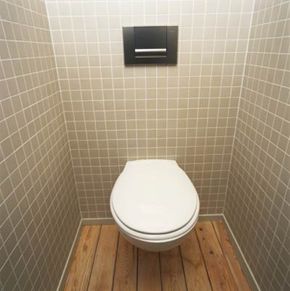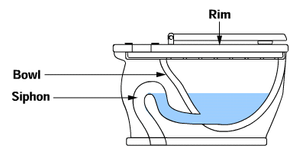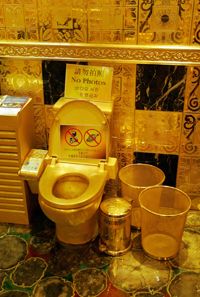Let's say that you somehow disconnected the tank, and all you had in your bathroom was the bowl. You would still have a toilet. Even though it has no moving parts, the bowl solves all of the problems a toilet needs to solve. The crucial mechanism that is molded into the bowl is called the bowl siphon, shown here:
You can understand how the siphon works by trying two experiments with your toilet. First, take a cup of water and pour it into the bowl. You will find that approximately nothing happens. What's even more interesting is that you can pour 25 cups (6 L) of water into a toilet, one at a time, and still, nothing will happen. That is, no matter how many cups of water you pour in, the level of the water in the bowl never rises. You can see in the figure why this is the case. When you pour the cup of water in, the water level in the bowl rises, but the extra water immediately spills over the edge of the siphon tube and drains away.
Now, take a bucket of water -- approximately 2 gallons (7.6 L) -- and pour it into the bowl. You will find that pouring in this amount of water causes the bowl to flush. That is, almost all of the water is sucked out of the bowl, and the bowl makes the recognizable "flush" sound and all of the water goes down the pipe. What's happened is this: You've poured enough water into the bowl fast enough to fill the siphon tube. And once the tube was filled, the rest was automatic. The siphon sucked the water out of the bowl and down the sewer pipe. As soon as the bowl emptied, air entered the siphon tube, producing that distinctive gurgling sound and stopping the siphoning process.
You can see that, even if someone were to cut off the water to your bathroom, you could still flush the toilet. All you need is a bucket containing a couple of gallons of water.



